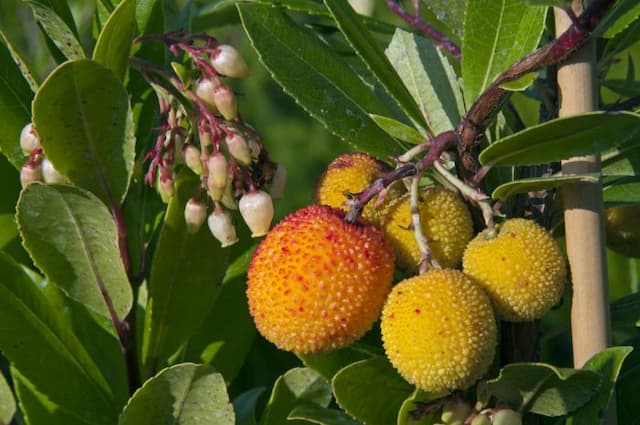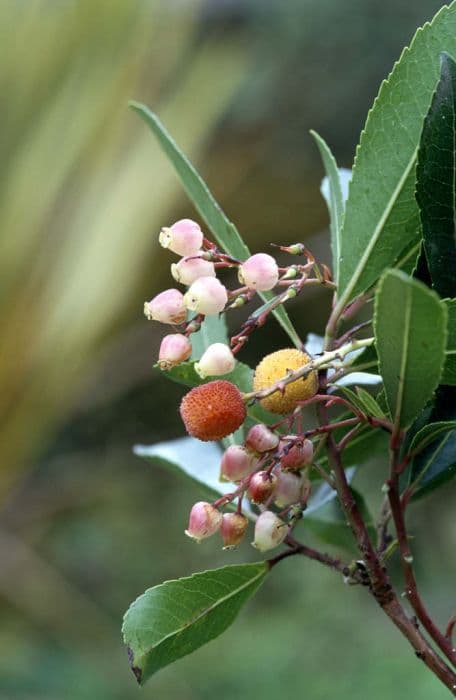Rhododendron Rhododendron 'Moerheim'

ABOUT
The Rhododendron 'Moerheim' is characterized by its showy flowers that bloom profusely in clusters. The blossoms are typically a vivid color that can add a burst of brightness to any garden. The flowers have a trumpet-like shape, which is a common feature among Rhododendrons, and they usually exhibit a lustrous, waxy appearance. The foliage of Rhododendron 'Moerheim' is equally attractive, with leaves that are thick, leathery, and evergreen, providing year-round interest. The leaves have a smooth texture and an elongated oval shape, often with a slightly curled edge, adding to the plant's aesthetic appeal. With its dense growth habit, this Rhododendron creates a lush and substantial presence in the landscape. The branches tend to grow in a pattern that provides the plant with a robust, well-formed structure. Overall, the Rhododendron 'Moerheim' exudes a sense of vitality and beauty that makes it a popular choice for gardeners seeking to add a touch of drama and color to their plantings.
About this plant
 Names
NamesFamily
Ericaceae.
Synonyms
I'm sorry, but the information is not available or there are no common names for the Rhododendron 'Moerheim'.
Common names
Rhododendron 'Moerheim'
 Toxicity
ToxicityTo humans
Rhododendron, including the 'Moerheim' variety, contains toxic compounds that can be harmful to humans if ingested. All parts of the plant are poisonous, containing a class of toxic compounds known as grayanotoxins. Symptoms of rhododendron poisoning can include a burning sensation in the mouth, excessive salivation, vomiting, diarrhea, weakness, and loss of coordination. In severe cases, it can cause a drop in blood pressure, coma, and potentially be fatal if enough of the plant is consumed.
To pets
Rhododendron is toxic to pets, including dogs and cats. Similar to its effects on humans, all parts of the plant contain grayanotoxins. If a pet ingests rhododendron, they may experience symptoms such as vomiting, diarrhea, drooling, weakness, and a loss of appetite. In serious cases, consumption can lead to issues with heart rhythm, hypotension, coma, and potentially death. Prompt veterinary care is crucial if a pet is suspected to have ingested any part of a rhododendron plant.
 Characteristics
CharacteristicsLife cycle
Perennials
Foliage type
Evergreen
Color of leaves
Green
Flower color
Varies
Height
6 feet (1.8 meters)
Spread
6 feet (1.8 meters)
Plant type
Shrub
Hardiness zones
5
Native area
Asia
Benefits
 General Benefits
General Benefits- Ornamental Appeal: Rhododendron 'Moerheim' is valued for its vibrant flowers which enhance the aesthetic appeal of gardens and landscapes.
- Durability: The plant is known for its hardiness and can thrive in a variety of climates, making it a robust addition to any garden.
- Attracts Pollinators: The flowers of Rhododendron 'Moerheim' attract bees, butterflies, and other pollinating insects, supporting local ecosystems.
- Low Maintenance: Once established, Rhododendron 'Moerheim' generally requires minimal care, making it suitable for gardeners of all skill levels.
- Year-Round Interest: This variety of rhododendron offers evergreen foliage, providing greenery and interest throughout all seasons.
- Versatility in Landscaping: It can be used in various landscaping designs, including as a specimen plant, in borders, or as part of foundation plantings.
- Improves Biodiversity: Adding Rhododendron 'Moerheim' to a garden can increase the plant diversity, which is beneficial for the overall health of the garden environment.
- Privacy and Screening: The dense growth habit of Rhododendron 'Moerheim' can be utilized for creating natural privacy screens in gardens and yards.
 Medical Properties
Medical PropertiesThis plant is not used for medical purposes.
 Air-purifying Qualities
Air-purifying QualitiesThis plant is not specifically known for air purifying qualities.
 Other Uses
Other Uses- The Rhododendron 'Moerheim', commonly known as Rhododendron, can be used to create a natural privacy screen or hedge due to its dense foliage.
- Its colorful blooms are often used in floral arrangements, both fresh and dried, to add vibrancy to bouquets and indoor decorations.
- The plant's leaves can be used to produce a natural dye for fabrics, yielding colors in the range of tans and light browns depending on mordant used.
- Some cultures use rhododendron wood to craft small items such as handles, buttons, or even as inlay work in fine furniture for decorative purposes.
- Rhododendron blossoms can be candied and used as a unique, edible decoration for desserts, though caution is advised due to their potential toxicity if not prepared correctly.
- The plant can be incorporated into a sensory garden for its variety in color and texture, which provides an interactive experience for visitors.
- Dried Rhododendron petals are sometimes used in potpourri mixes to add a floral scent and pops of color.
- Bees that feed on Rhododendron may produce honey with a slightly different taste, although it can be toxic, known as "mad honey," and should be handled with care.
- The complex root system of Rhododendron is effective in soil stabilization and can be used in landscaping to prevent erosion on slopes.
- Its evergreen nature makes the Rhododendron ideal for winter gardens, providing year-round greenery when other plants have lost their leaves.
Interesting Facts
 Feng Shui
Feng ShuiThe Azalea is not used in Feng Shui practice.
 Zodiac Sign Compitability
Zodiac Sign CompitabilityThe Azalea is not used in astrology practice.
 Plant Symbolism
Plant Symbolism- Warning: Rhododendrons are often associated with caution due to their toxic nature. The presence of this plant can symbolize a warning to be wary or vigilant.
- Beware: Similar to the warning, rhododendrons can also signify that one should beware of an upcoming situation or the intentions of others around them.
- Abundance: With their lush, full blooms, rhododendrons can represent abundance or wealth.
- Elegance: The Rhododendron's attractive flowers and overall appearance convey a sense of elegance and sophistication.
- Survival: As Rhododendrons are hardy plants that can grow in challenging environments, they symbolize the ability to thrive and survive under difficult conditions.
 Water
WaterRhododendrons should be watered deeply but infrequently, allowing the soil to become somewhat dry between waterings. Provide about 1 gallon of water per yard of soil around the plant once a week during the growing season. During the hot summer months, especially if the weather is dry, they may require watering twice a week. In the winter, reduce watering, only providing water if the soil is very dry and the plant shows signs of needing moisture. Ensure that the water goes deep into the root zone to encourage deep root growth.
 Light
LightRhododendrons prefer dappled shade or part sun, particularly in the morning with protection from intense afternoon sun. The ideal spot for rhododendrons is under the canopy of tall trees that provide filtered sunlight, mimicking their natural habitat in the understory of forests. They can tolerate full sun in cooler climates if they are well-watered.
 Temperature
TemperatureRhododendrons thrive in temperatures between 40°F and 85°F. They can withstand a maximum temperature of about 90°F, and minimum winter temperatures down to about -5°F, although protection from harsh conditions is recommended. The ideal temperature range for rhododendrons to flourish is between 50°F and 70°F.
 Pruning
PruningPrune rhododendrons to maintain shape and encourage bushier growth, removing dead or diseased branches, and to deadhead spent flowers directly after blooming. The best time for pruning is shortly after the blooming period ends, as this is when new buds for the next year start to form. Pruning later in the season can reduce next year's blooms. Generally, pruning once a year is sufficient for healthy growth.
 Cleaning
CleaningAs needed
 Soil
SoilRhododendrons, including the 'Moerheim', thrive best in acidic soil with a pH range of 4.5 to 6.0. A well-draining soil mix is critical; you can create an optimal mix using 50% pine bark, 40% peat moss, and 10% perlite. This combination ensures aeration while retaining adequate moisture.
 Repotting
RepottingRhododendrons like 'Moerheim' generally need repotting every 2 to 3 years. However, if they are not outgrowing their pots and seem healthy, it is not strictly necessary. Repotting should be done during late winter or early spring.
 Humidity & Misting
Humidity & MistingRhododendrons, such as 'Moerheim', prefer moderate to high humidity levels, ideally between 40-60%. Regular misting can help maintain these levels if the indoor air is too dry.
 Suitable locations
Suitable locationsIndoor
Ensure acidic soil, bright indirect light, and keep moist.
Outdoor
Plant in partial shade, ensure soil is acidic and well-drained.
Hardiness zone
5-8 USDA
 Life cycle
Life cycleRhododendron 'Moerheim', commonly known as Moerheim Rhododendron, begins its life cycle as a dormant seed that requires stratification before germination. Upon the appropriate environmental conditions, the seed germinates in the spring and develops into a seedling with a rudimentary root system and foliage. As the seedling matures, it grows into a young plant and continues to develop a more extensive root system and woody structure, producing evergreen leaves and showcasing typical broad-leafed evergreen characteristics. Following several years of vegetative growth, the Moerheim Rhododendron reaches maturity and begins its reproductive phase by producing flowers, usually in late spring to early summer, which are pollinated by insects. After successful pollination, the plant develops seed capsules that, once dried, release seeds to facilitate the continuation of its life cycle. Over the years, the mature plant can experience cycles of growth, flowering, and dormancy, adapting to seasonal changes until it eventually reaches the end of its lifespan and dies.
 Propogation
PropogationPropogation time
Spring-Early Summer
Rhododendron 'Moerheim', commonly known as Rhododendron, can be effectively propagated through semi-hardwood cuttings. This method is typically carried out during the late summer when the new growth has begun to mature and harden slightly. To do this, a 4 to 6 inch (about 10 to 15 centimeters) section of the semi-hardwood stem is cut just below a node. The lower leaves are removed, and the cut end is dipped in rooting hormone to encourage root development. The prepared cutting is then inserted into a well-draining, sterile potting mix. To maintain high humidity, the pot may be covered with a plastic bag or placed in a propagator. The cutting should be kept in a warm spot with indirect light until roots have formed, which usually takes several weeks.









